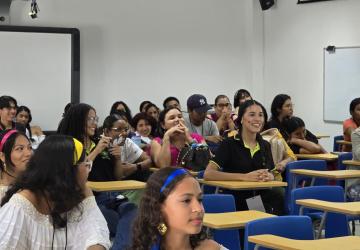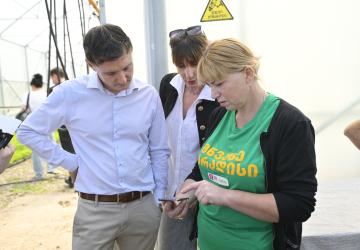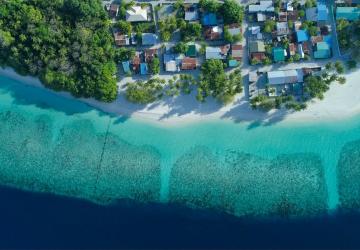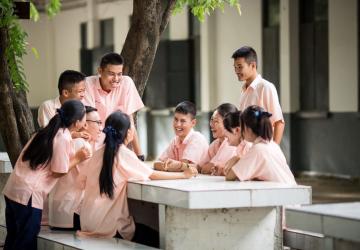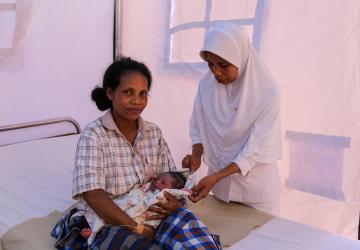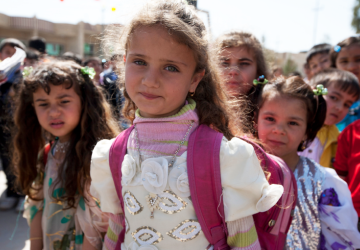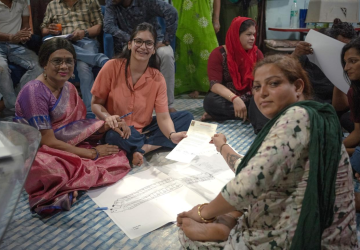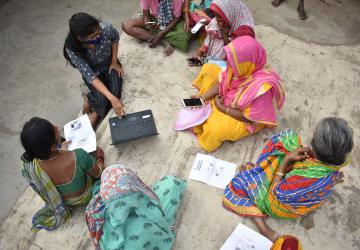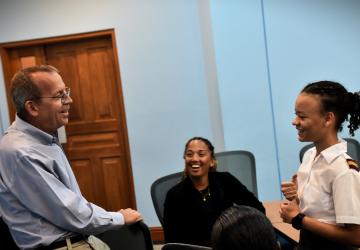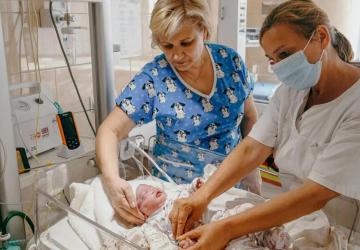Water is Life: How the UN in Samoa is responding to the Triple Planetary Crisis
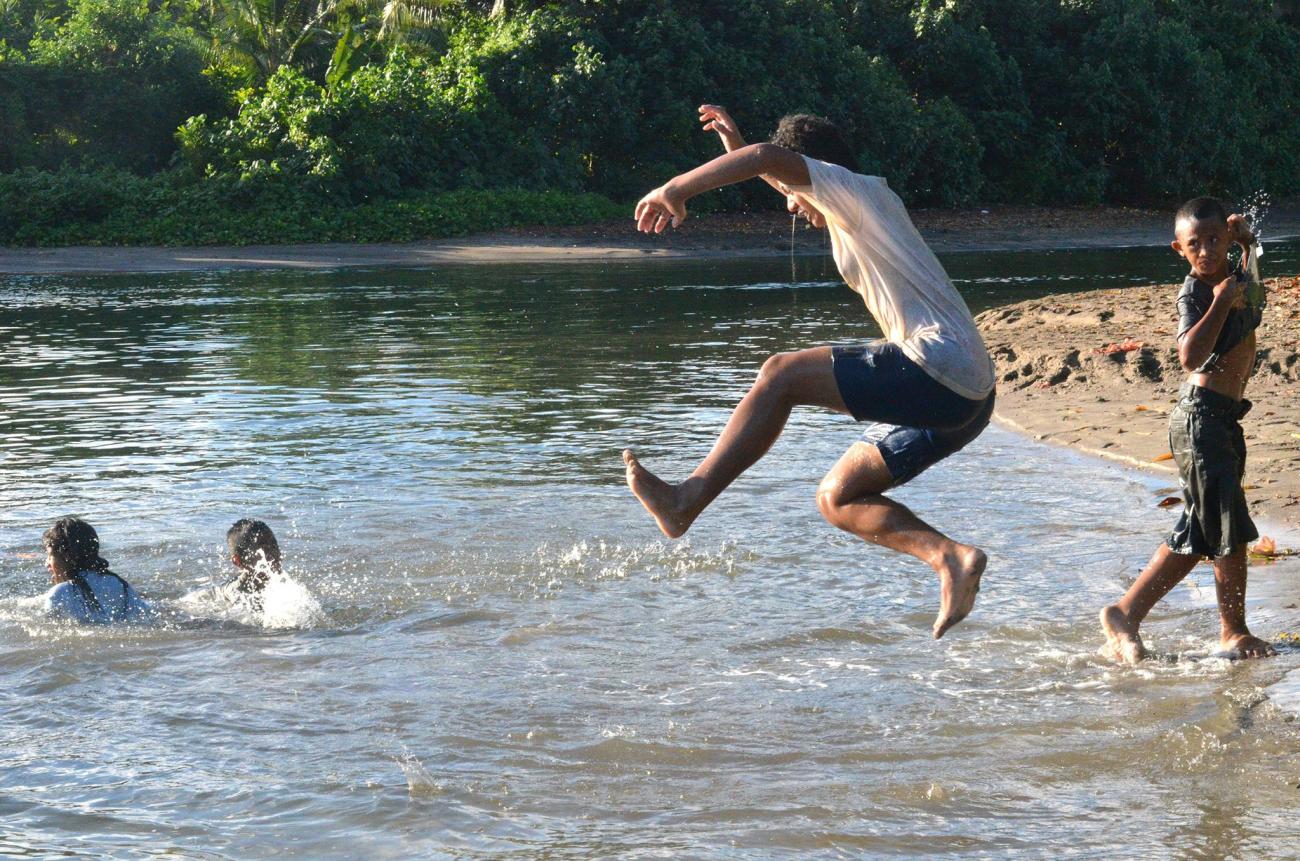
Water is life. No other definition captures quite so aptly what this essential element means for our lives, livelihoods and the natural environment.
Although it is considered both a renewable and a non-renewable resource, water is becoming scarce and is expected to reach a critical point by 2040.
Out of the total volume of water present on earth, 97.5% is saline- coming from the seas and oceans, while only 2.5% is freshwater, of which only 0.3% is present in liquid form on the surface, including in rivers, lakes, swamps, reservoirs, creeks, and streams.
Due to irresponsible usage, including pollution from agriculture and the construction of dams, liquid freshwater on the surface of the earth is rapidly diminishing. We are the only known planet to have consistent, stable bodies of liquid water on its surface, yet we are not doing enough to preserve and provide access to all people everywhere to this critical source of life.
According to the 2021 UN Water report, in 2020, around 2 billion people (26% of the global population) lacked safely managed drinking water services and around 3.6 billion people lacked safely managed sanitation. Some 2.3 billion people live in countries facing water stress of whom 733 million are in high and critically water-scarce environments.
Samoa's connected crises
In Samoa and other Pacific Small Island Developing States, access to clean water represents a huge challenge. Although these islands enjoy abundant rainfall – 2 to 4 times the average global annual precipitation, poor waste management systems and lack of adequate infrastructure means that the availability of clean water is severely limited.
Only 55 percent of people across the Pacific Islands have access to basic drinking water, and just 30 percent have sanitation services—the lowest rate in the world. According to a joint study by the National University of Samoa, the Ministry of Natural Resources and other partners, water sources tested contained a high concentration of minerals, toxic pesticides, microplastics and bacteria such as e-coli, which increases the rate of water-borne diseases and poses significant health risks.
For our UN country team in Samoa, improving water quality is a central, cross-cutting priority which not only protects communities and helps prevent disease, but also feeds into our broader efforts to address the Triple Planetary Crisis of climate disruption, nature loss and pollution.
The use of the Triple Planetary Crisis framework provides a valuable basis for the measurement of losses and damages which countries like Samoa experience due to climate change and pollution including deterioration of water ecosystem services.
With this in mind, we have engaged extensively with communities and partners across Samoa over the past six months to develop the Vai O Le Ola (Water of Life) Report. Launched ahead of the UN Water Conference in New York (22-24 March), the report draws on insights from these consultations to set out a response to the Triple Planetary Crisis and propose integrated approaches of restoring the quality and resilience of Samoa’s water system.
An integrated path forward
From rivers, mangrove swamps, lakes, wetlands, territorial waters, and the Exclusive Economic Zone (EEZ) – water represents a major part of the environment system which supports the livelihoods for over 200,000 people in Samoa and also forms a significant part of Samoan cultural identity. Improving the quality of this critical source of life must begin with the integration of all relevant policies and strategies on climate change, ocean management, socio-economic development, waste management, and biodiversity conservation into one overarching framework.
Targeted interventions including the Vai O Le Ola Trust Fund and Knowledge Crowdsourcing Platform, and programmes on Innovative Climate and Nature Financing, Social Entrepreneurship for Climate Resilience, Community Access to Clean Energy, Zero Plastic Waste, are central to the Triple Planetary Crisis Response Plan in Samoa and across the Pacific. Nature-based Watershed Management is another key initiative outlined in the Vai O Le Ola report which will support agro-forestry, reforestation and invasive species management, flood management and biodiversity conservation linked to water systems.
On the legislative side as well, new opportunities to strengthen environmental protection and conservation are emerging. Last year, the UN General Assembly adopted a resolution recognizing for the first-time access to a clean, safe, and sustainable environment including water as a fundamental human right. With the adoption of this resolution, global attention on the legal rights of ecosystems and natural resources has significantly increased.
In 2022, Ecuador was the first country in the world to recognize and implement the “rights of nature” followed by Colombia which established legal personality for the Atrato River in recognition of the biocultural rights of indigenous communities. In Samoa, the National Human Rights Institution is already discussing how the right to a clean, safe and sustainable environment will be operationalized into law.
As an ‘ocean state’, water is a defining feature of Samoa’s national wealth and people’s way of living – known as ‘Fa’a Samoa.’ To find long lasting solutions to water scarcity and pollution across Samoa and other Pacific Islands, we must therefore look not only towards science, technology and innovation, but also to the centuries of wisdom and experience of the communities who live here.
We must recognize that for the people of Samoa, as Prime Minister Fiame Naomi Mata’afa explains below, their waters are a source of life as well as a source of beauty.
“A continuum of land and ocean deeply connected by culture and history defines our identity as islanders, voyagers, and people of the Pacific. For more than two millennia, our islands have been our home; our rivers and ocean; our pathways.”
This blog was written by UN Resident Coordinator in Samoa, Cook Islands, Niue, Tokelau, Simona Marinescu, Ph.D. Editorial support by UNDCO. To learn more about the work of the UN in Samoa visit Samoa.un.org


